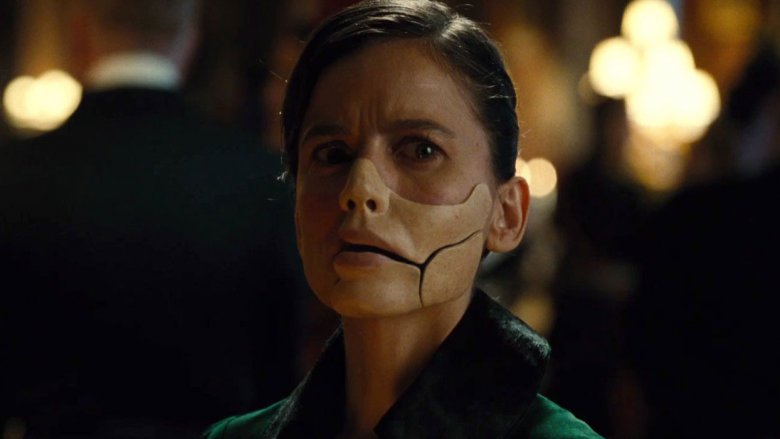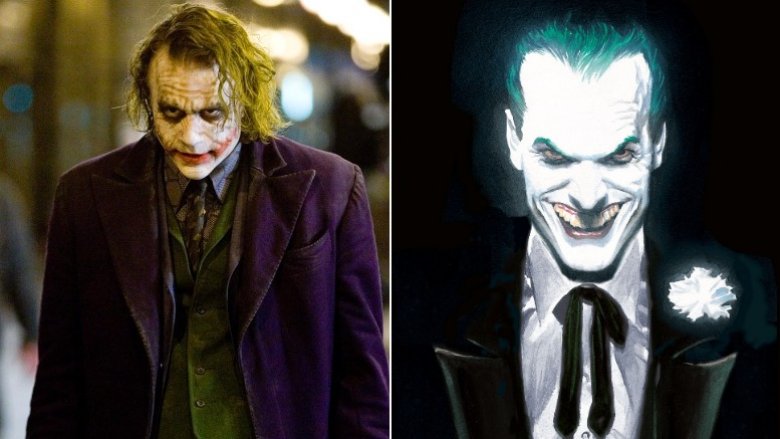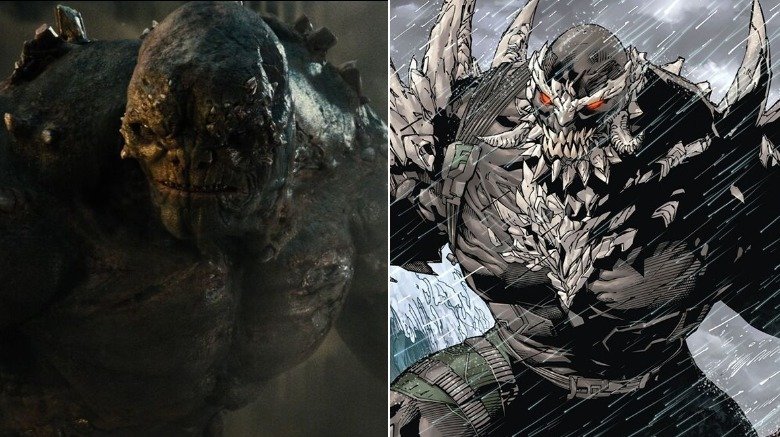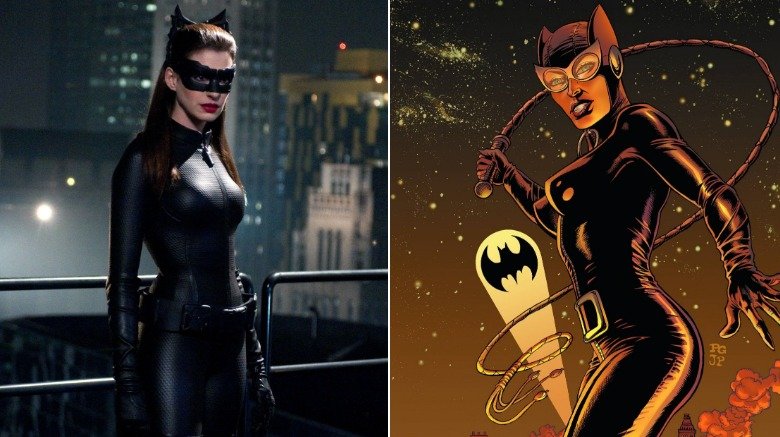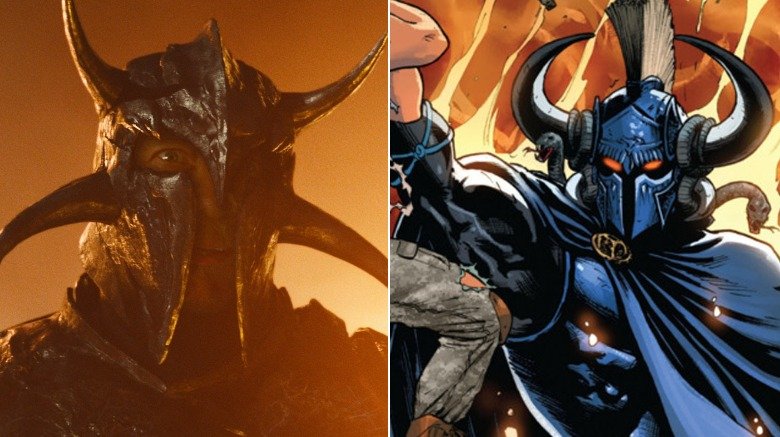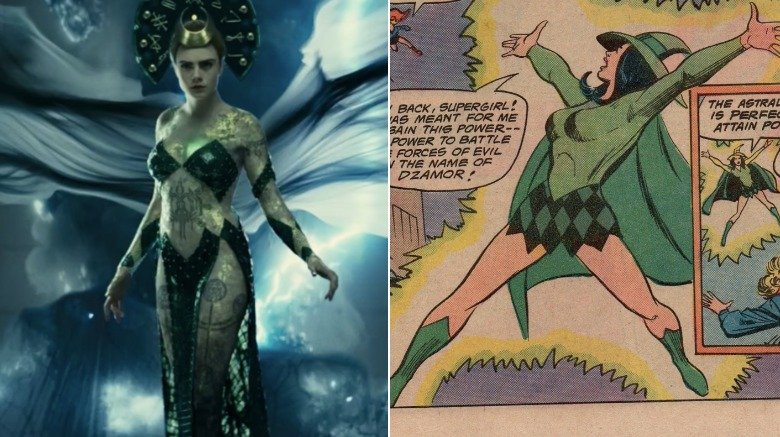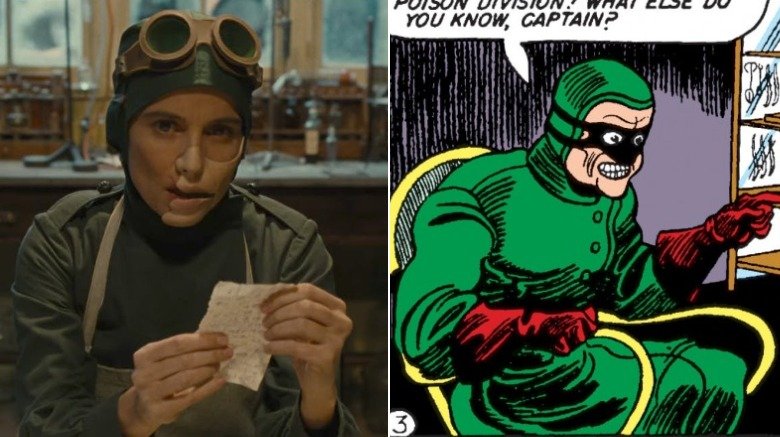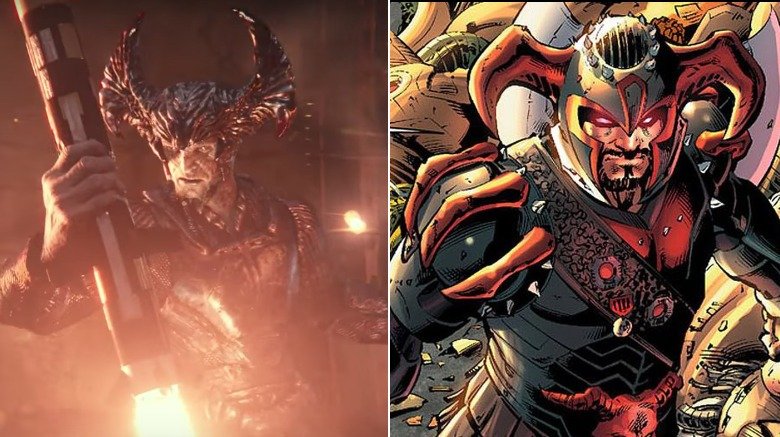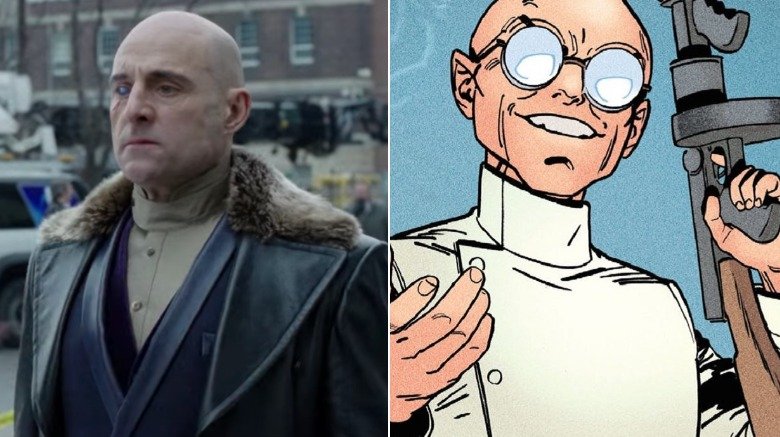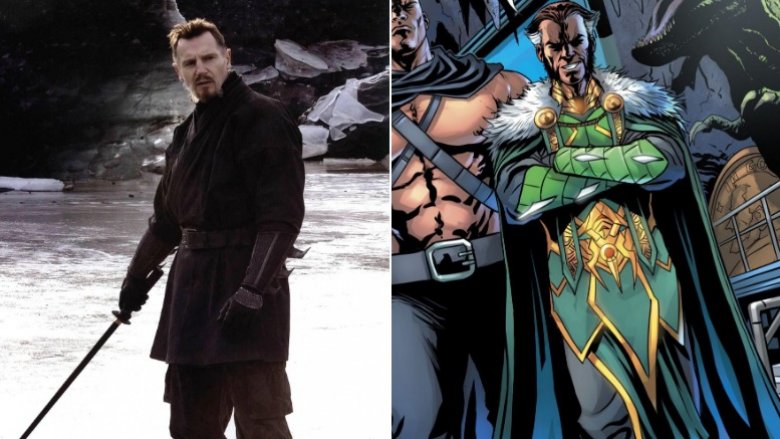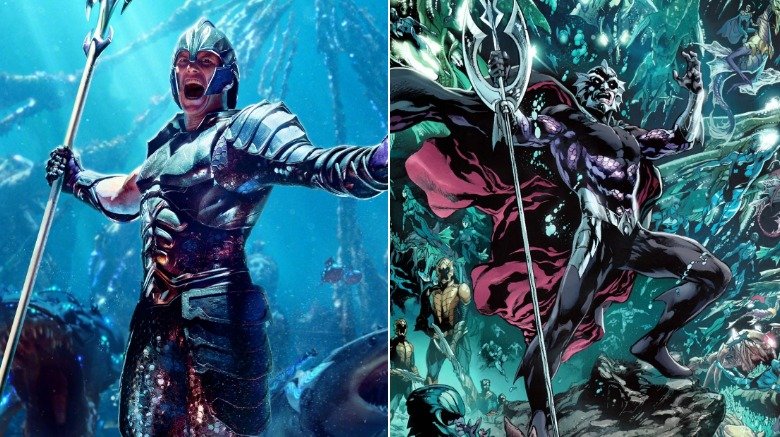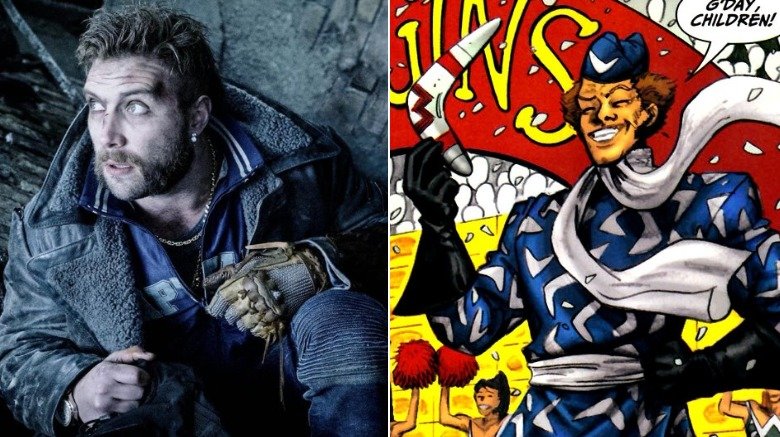How These DC Villains Should Really Look
In the age of Suicide Squad, Birds of Prey, and Joker, DC's biggest bad guys aren't just make appearances on the silver screen — they're positively dominating it. Who needs Superman when you can smash-and-grab with the hedonistic Harley Quinn? Especially when the movies keep making villainy look so darn cool. DC's ne'er-do-wells wow audiences in custom jackets, sky-high stilettos, flamboyant jewelry, and gorgeously tailored suits, their flexible morality allowing equally flexible wardrobes that borrow from all manner of eras, traditions, and aesthetics.
But these designs are often as different from their comic origins as Lex Luthor is from Superman. Some have been toned massively down, while others have been taken on dramatic flights of fancy. From tracksuits that have seen better days to slick vinyl catsuits, we're here to investigate what DC's bad guys actually look like in the comics they still call home, and just how different that is from what makes it onto the silver screen.
The Joker
The Joker has a pretty packed wardrobe. Batman t-shirts? He's sporting them in Sean Murphy's miniseries, Batman: White Knight. Sleeveless takes on the classic Howie-style doctor's coat? Joker donned one in Batman: RIP. But still, over the decades, a central look emerges: classic suits and tuxedos in green, orange, purple, and red. His first appearance featured a large bow at his throat, purple gloves, and well-pomaded hair; others, such as Alex Ross' interpretation, take his dapper tendencies all the way to formal white tie ensembles. Though artists often add a couple unhinged details to his look — most often mussed hair or outsize teeth — the Joker tends to keep himself as well-turned-out as a Downton Abbey character.
Modern movie audiences have three very different Jokers to consider. Heath Ledger's clown is a mangy monstrosity whose makeup visually flakes off throughout the movie. Joaquin Phoenix's take on the character looks to famous mid-century television clowns like Bozo and Howdy Doody's Clarabell for inspiration. Jared Leto's demonic wild child swaps formal wear for face tattoos and lurid purple coats over a bare chest. Each of these interpretations tells the audience something different: Leto's Joker is more of a mafioso than a mastermind, Phoenix's Joker is a 1970s everyman gone off the deep end, and Ledger's Joker is a nightmarish vision of urban decay. What unites them is that not one of them is as sharply maintained as the madman of the monthlies.
Doomsday
Doomsday's appeal is pretty much summed up by his name. He is the reckoning at the end of Superman's adventures, the ruin that even the Man of Steel's prodigious powers cannot overcome. Appropriately, he is best known as the villain of The Death of Superman. The result of genetic engineering and individual adaptation, he was shaped by the schemes of an alien scientist and the primordial wilds of Krypton itself into the ultimate killing machine. And boy, does he look it: Doomsday is a hulking grey goliath whose skeleton emerges through his skin in deadly spikes.
Doomsday's incarnation in Batman v Superman: Dawn of Justice was a very different creature indeed. The product of Lex Luthor's meddling with General Zod's corpse, this Doomsday was as large and gray as his comic counterpart, but not quite a hard-edged. Though spikes of bone emerged mid-battle from his skin, he started out as a deformed grey brute who looked roughly sculpted from clay, in contrast to the original villain's deadly precision. Moreover, after absorbing the energy from a nuclear strike, this Doomsday developed the ability to shoot blasts of energy out of his hands, an ability the Doomsday of the comics only develops after his fateful battle with the Outsiders superteam. Doomsday on film is a grunting, primal vision of brutality, something like the distant ancestor of the comics version. Both, however, are among the heaviest hitters in the DC universe.
Catwoman
The feline fatale with a taste for the finer things likes to keep it sleek. The Catwoman of the 1966 Batman TV series accentuated basic black with glittering accessories and a striking mask. Batman Returns imagined Catwoman as a city girl pushed to the brink, her madness symbolized by her visibly stitched patchwork of a catsuit. Halle Berry's costume was shredded, but still as dark as the shadows. The Dark Knight Rises depicted Catwoman as a burglar in matte black, accentuated by the sharp points of her stilettos and the cat-eared tips of her goggles. All of these incarnations rest on a dark canvas, using smaller details to do the heavy lifting of her characterization. Most of them (sorry, Halle Berry) have become some of the most impressive superheroic designs on screen.
But the Catwoman of the comics has worn far more than three costumes, ranging from emerald evening wear to royal purple catsuits. For all that, Trail of the Catwoman artist Darwyn Cooke's 2001 redesign was so immediately iconic, it's become the go-to look. In it, Catwoman wears a simple catsuit and a cat-eared cowl, set off by flat-soled motorcycle boots and flared goggles. It's simple and remarkably practical — how often does a slinky villainess get to forego high heels? — but its sleek details make it timelessly stylish. Catwoman's taste might run to the extravagant, but when she's on the job, she keeps things functional.
Ares
Being the literal god of war pretty much requires an impressive outfit. You can't show up to the battlefield in a stained hoodie when you're a god. You can't lay low in board shorts. You need to go big, as Ares does in the 2017 Wonder Woman film: shining armor, spiked helmet, enormous weaponry. War is many things, but it sure ain't subtle.
Ares of the comics follows suit. Typically, as in George Perez's classic take on Wonder Woman and Greg Rucka and Nicola Scott's recent revival, he wears dark blue armor, a plumed helmet, and a billowing cape. Despite certain details, it's largely the same design as what ended up on screen. But peer closer, and one important difference between the two takes on Ares emerge: in the comics, Ares has no discernible body. Every inch of flesh is covered, from his toes to his fingertips, save a narrow strip of skin exposed by his helmet. On anyone else, as on David Thewlis, this would reveal a portion of the nose, lips and chin. On the comic character, however, there is only depthless darkness, studded with two smoldering eyes.
Was it cool to see the man who played mild-mannered Remus Lupin glowering beneath a helmet? Yes. But it would have been equally striking to see his face disappear after doing away with his disguise.
Enchantress
Remember when the villain of Suicide Squad opened an apocalyptic portal through the art of aggressive belly dancing? In Enchantress' defense, when you're a millennia-spanning interdimensional witch-goddess, you can pretty much make your own rules. That certainly applied to the character's wardrobe, which shifted from rags and tarnished jewlery to a billowing two-piece affair, crowned by a rune-inlaid headdress. Was it the kind of outfit one could do serious battle in? No way. But Enchantress had the sort of powers that allowed her to bypass fisticuffs.
Her comics incarnation, introduced in a 1966 issue of Strange Adventures that announced the arrival of "The Switcheroo-Witcheroo," is a being of great power, capable of teleportation, telekinesis, and a wide array of other such sorcery. Though she's had many outfits, all of them are in her signature bright green and most feature a flamboyant cloak. Perhaps her most unique costume is her very first: a classic witch hat, paired with a harlequin-patterened mini-dress. Not great for the Suicide Squad, but perfect for the swinging '60s.
Doctor Poison
Doctor Poison is one of Wonder Woman's earliest villains — and still one of her most terrifying. A princess working as the head of the Nazis' poison division, she disguises her sex (not to mention her comely looks) by wearing thick green doctor's gear and a mask with an unnerving rictus grin. Her greatest creation was "Reverso," a poison that, given to Allied soldiers, would force them into doing the opposite of what they were told. Naturally, Wonder Woman saved the day, Doctor Poison was unmasked, and the Nazis featured were soundly trounced.
Doctor Poison isn't a princess, in disguise as a man, or working with the Nazis in the 2017 Wonder Woman film. But she is very much a villain — and just as devastatingly deadly. In an intriguing twist, Doctor Poison's mask was reimagined as a series of flesh-colored plates, affixed to her face to hide the scars exposure to her own creations wrought. Those plates aren't just striking, but rooted in actual history: soldiers disfigured in World War I brought about new innovations in prostheses, especially ones of copper, tin, and rubber that obscured a missing nose, pitted cheeks, or lost eye. Doctor Poison might not have been the leering specter of the Axis she began as, but she filled Wonder Woman audiences with a comparable sense of terror.
Steppenwolf
DC's New Gods are way beyond our conventional notions of superheroes. They've got fabulous powers, extravagant outfits, inhabit the bombastically named New Genesis and Apokolips (can you guess which one's for bad guys?) and wield technology capable of transporting them across dimensions. Steppenwolf is a New God, and his incarnation in Justice League lived up to that race's larger-than-life reputation: He was a CGI colossus of armor, stone, and steel. Beneath his costume he was oddly waxen in appearance, his skin a drained gray crisscrossed by alien grooves. Add in two bony outgrowths off his chin, and you had a truly fearsome-looking opponent.
The Steppenwolf of the comics is similarly grand. His armor is red and black, accented by a skull worn at his waist and red, claw-like stripes atop his shoulders. More notable is the man (or, well, god) beneath the armor: in sharp contrast to the Steppenwolf of the movies, his comic incarnation is notably handsome. He wears a dark beard, sometimes twisted into long, wrapped braids, and tends to grin wolfishly. Both versions are frightening, but for very different reasons: movie Steppenwolf is utterly unknowable, while comic Steppenwolf is a man who, dressed differently, could pass for a hero. Regardless, both versions are not to be messed with — unless, of course, you're the Justice League.
Dr. Sivana
As a kid whose powers allow him to transform into a buff, superheroic adult in a flashy red suit, Shazam embodies one of the most potent power fantasies in all of comics. Appropriately, his arch-enemy is boldly drawn: Dr. Sivana, a criminal mastermind whose love of depraved science is matched only by his ego. This dude isn't just the kind of guy who calls his heroic adversary "the Big Red Cheese," named his kids "Magnificus" and "Beautia," and cheated on his legendarily gorgeous wife — he did all that and manages to be a corrupt businessman with as many hooks in Fawcett City's powerful as there are dangling off a pier.
His appearance in Shazam! isn't too terribly far off the mark. As in the comics, he is portrayed as a bald, smirking man whose ill intentions are practically visible in his eyes. But unlike the villain Mark Strong portrayed on screen, the Dr. Sivana of the comics is a hunched little man with an oversized head. His thick glasses often obscure his eyes, which, paired with the old-school lab coat he favors, create nothing so much as the very image of the mad scientist. Add in the diabolical alien worm, Mr. Mind, he is often seen with (glimpsed in the post-credits scene of the film), and it all results in a man you'd give a wide berth to on the street.
Ra's al Ghul
Ra's al Ghul didn't become the head of the League of Assassins through subtlety. No, this is a man who tossed his daughter into the resurrecting Lazarus Pits every time she died in training, deduced Batman's secret identity through sheer brainpower, and is often whispered of as "The Demon's Head" in the byways of the criminally inclined. He clawed his way to power over the course of centuries, infiltrated the halls of the wealthy and connected through genius and determination, and sired Talia al Ghul, herself one of Batman's more formidable foes. Accordingly, he cuts a fine figure: Ra's accents his roguish good looks with emerald green capes bordered in gold, intricately wrought jewelry, and often a lush length of fur. He doesn't need to blend into the shadows: he commands them.
Liam Neeson's portrayal in Batman Begins is a dramatic departure from this rich refinement. There, Ra's takes a far more hands-on approach to his aims, and accordingly, he chooses to blend in through muted suits and dark training gear. He is less the distant master of a thousand deadly hands and more the hands themselves, seeking to add Bruce Wayne to his ranks through subterfuge. Though his subdued aesthetic is indeed appropriate to that approach, one can't help but miss the flamboyance of his comic incarnation. When one can reverse death by a quick dip in a magic pool, why bother with incognito looks?
Ocean Master
The man who would become Ocean Master was born to power. Unlike Aquaman, his half-brother, he has spent years openly lusting for it — and sometimes even attaining it. He's the type of guy who likes to refer to his trident as a "scepter," and he dresses accordingly: Orm wears purple scaled armor, a finned helmet that covers his eyes with blank red oblongs, and a cape. Yes, a cape, even underwater.
Unique among the other entries on this list, Ocean Master's final costume in Aquaman is actually pretty darn close to what he wears in the comics — including the cape. But that resplendent outfit comes only at the end of the film, and is preceded by a host of other clothes, none of them subtle. He begins with dark armor of considerably more bulk than the sleek looks favored by the other denizens of Atlantis. Where Vulko and Mera wear close-fitting garments that catch the light in their many scales and grooves, Orm favors something far closer to a medieval knight's full plate armor. Later, he dons another set of armor wrought entirely of gold, topped off by a finned crown. Finally, in his face-off against his good-hearted brother, he wears what he's best known for. Taken in whole, Orm's costumes send one very clear message: he is to be obeyed, and he wants everyone to know it.
Captain Boomerang
Supervillain gimmicks range wildly in fearsomeness. Sometimes you get the Joker, essentially the embodiment of chaos, and sometimes, well, you get a guy like Captain Boomerang. It's all right there in the name: dude throws boomerangs. Now, of course, he's pretty darn good with those boomerangs, but no one was exactly surprised to see a guy named Captain Boomerang clad in a well-worn track suit and popped-collar trench coat in Suicide Squad, missing a few teeth and sporting some facial scars. He's a guy who revels in being weird and even a little off-putting, the kind of oddball who fits right in alongside Killer Croc and Harley Quinn.
Captain Boomerang is just as weird in the comics, but with a good deal more panache. Rather than a ratty tracksuit, he began as a man in a boomerang-patterned tunic, ascot, and jaunty blue garrison cap. Though recent incarnations have favored a more toned-down look, his clothes remain well-cut and elegant, and still often incorporate boomerang patterns and an ascot. He might be strange, but he's going to look good doing it — even when he's bothering his teammates with his boorishness and hijinks. One can only imagine the horror Captain Boomerang of the comics would feel upon glimpsing his motley film self — to say nothing of the latter's preoccupation with unicorns.
